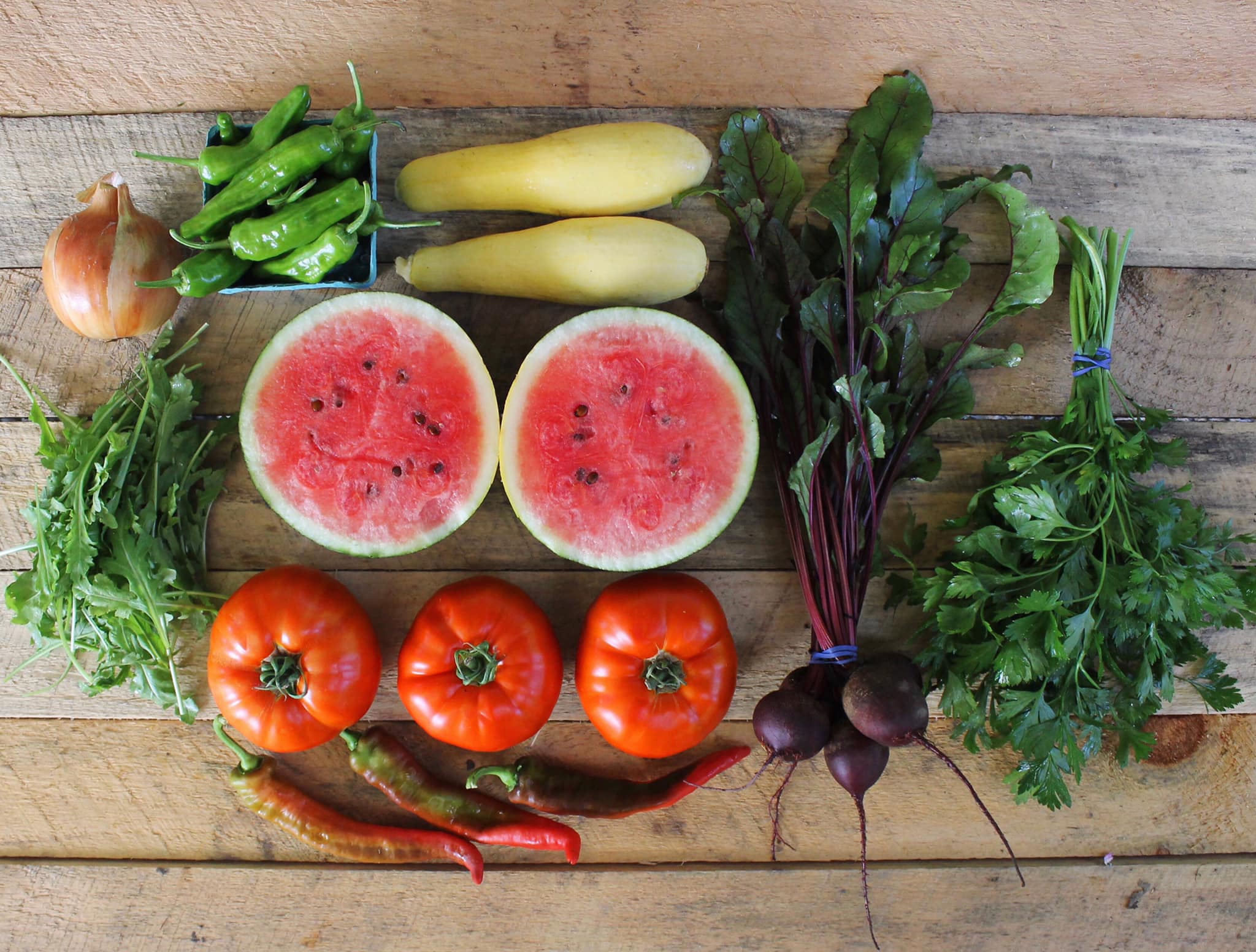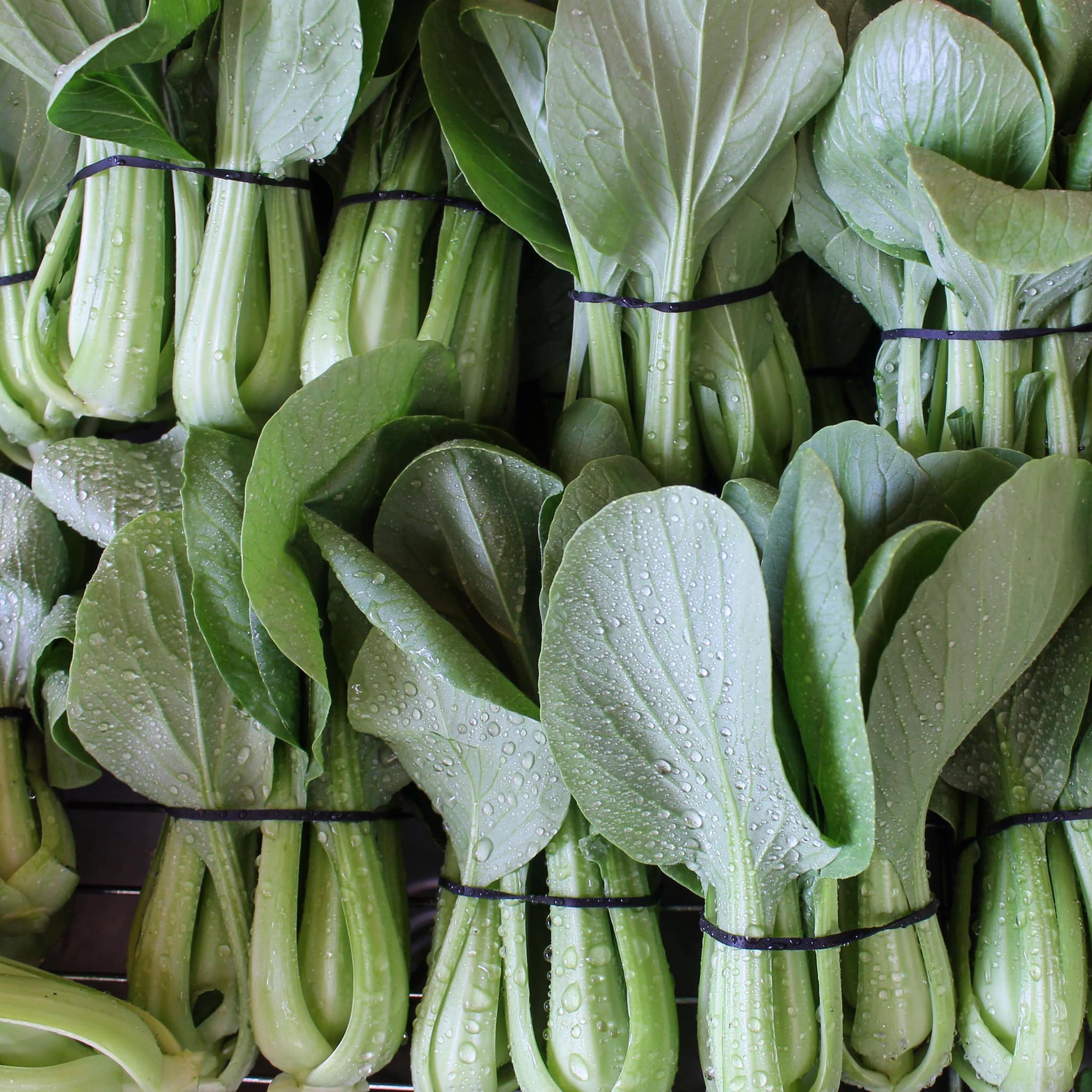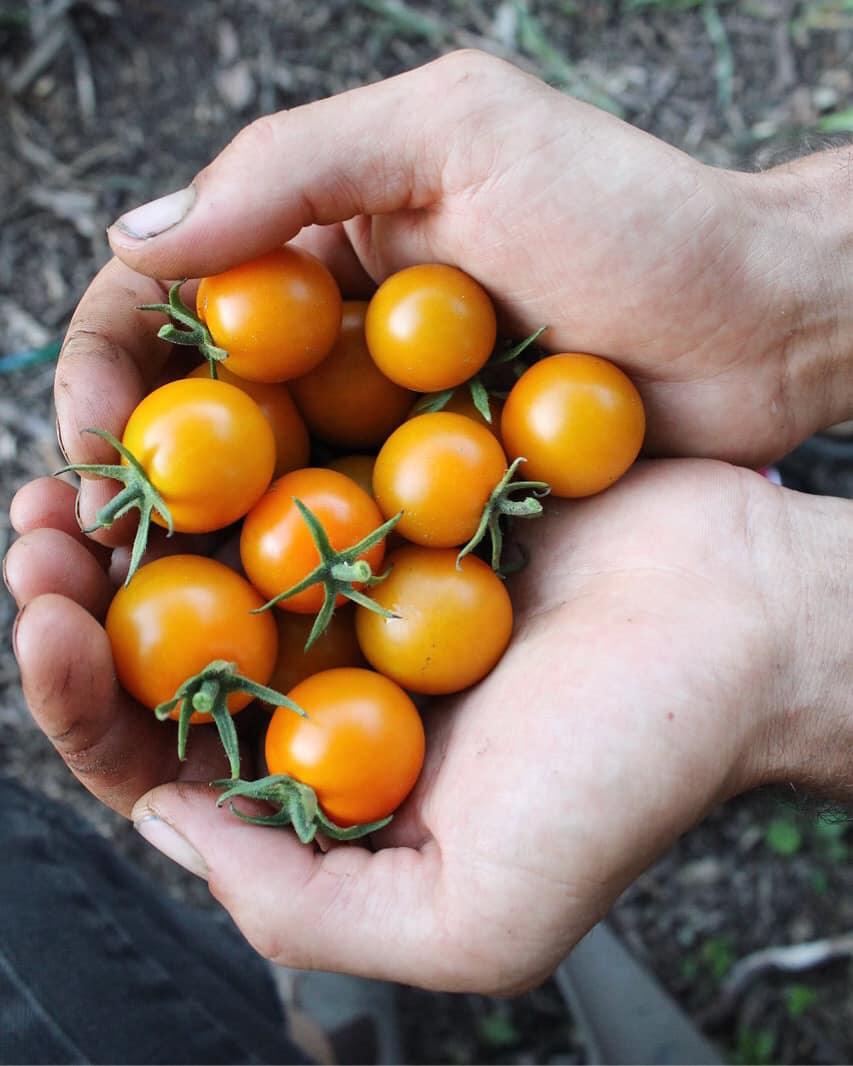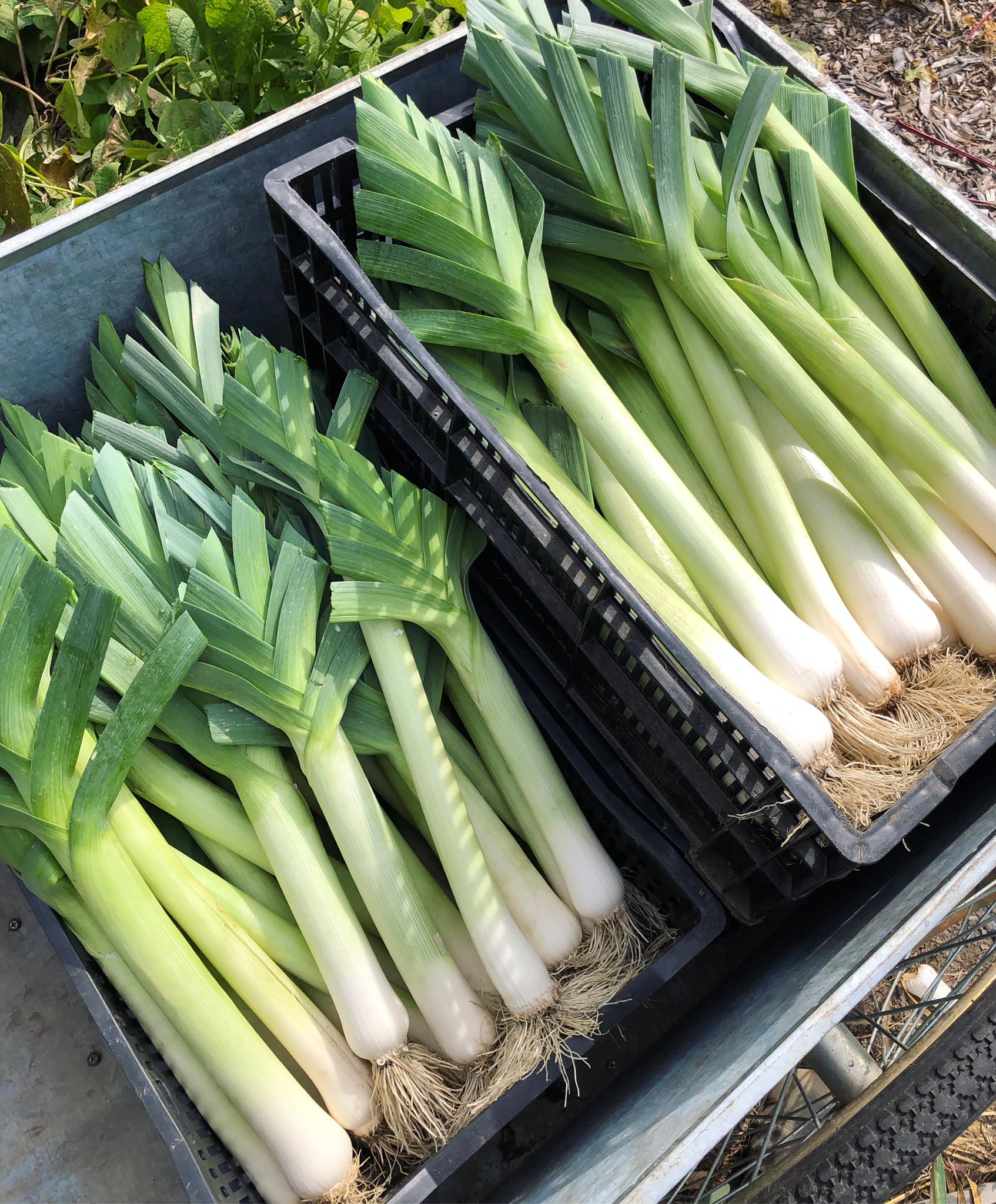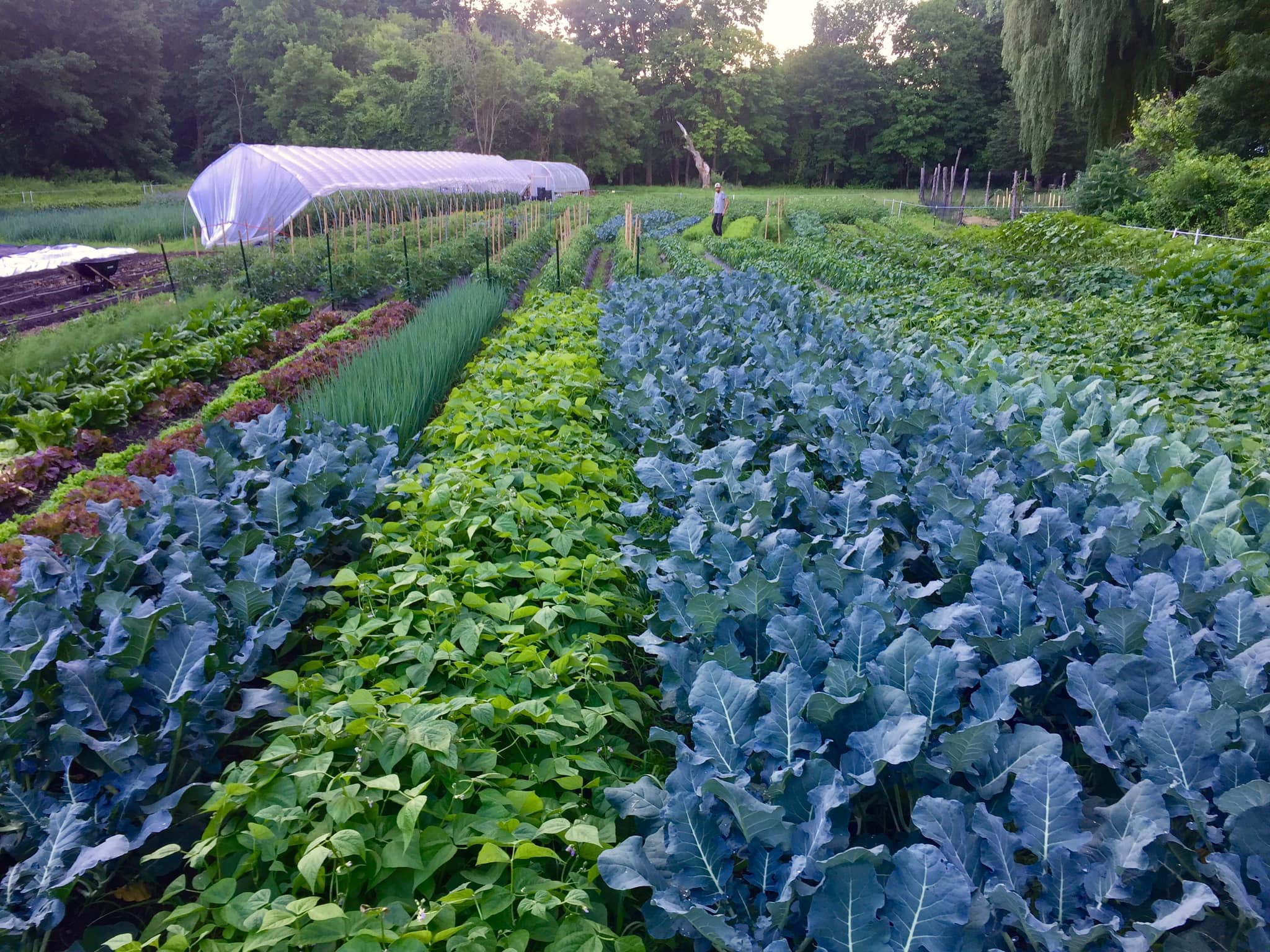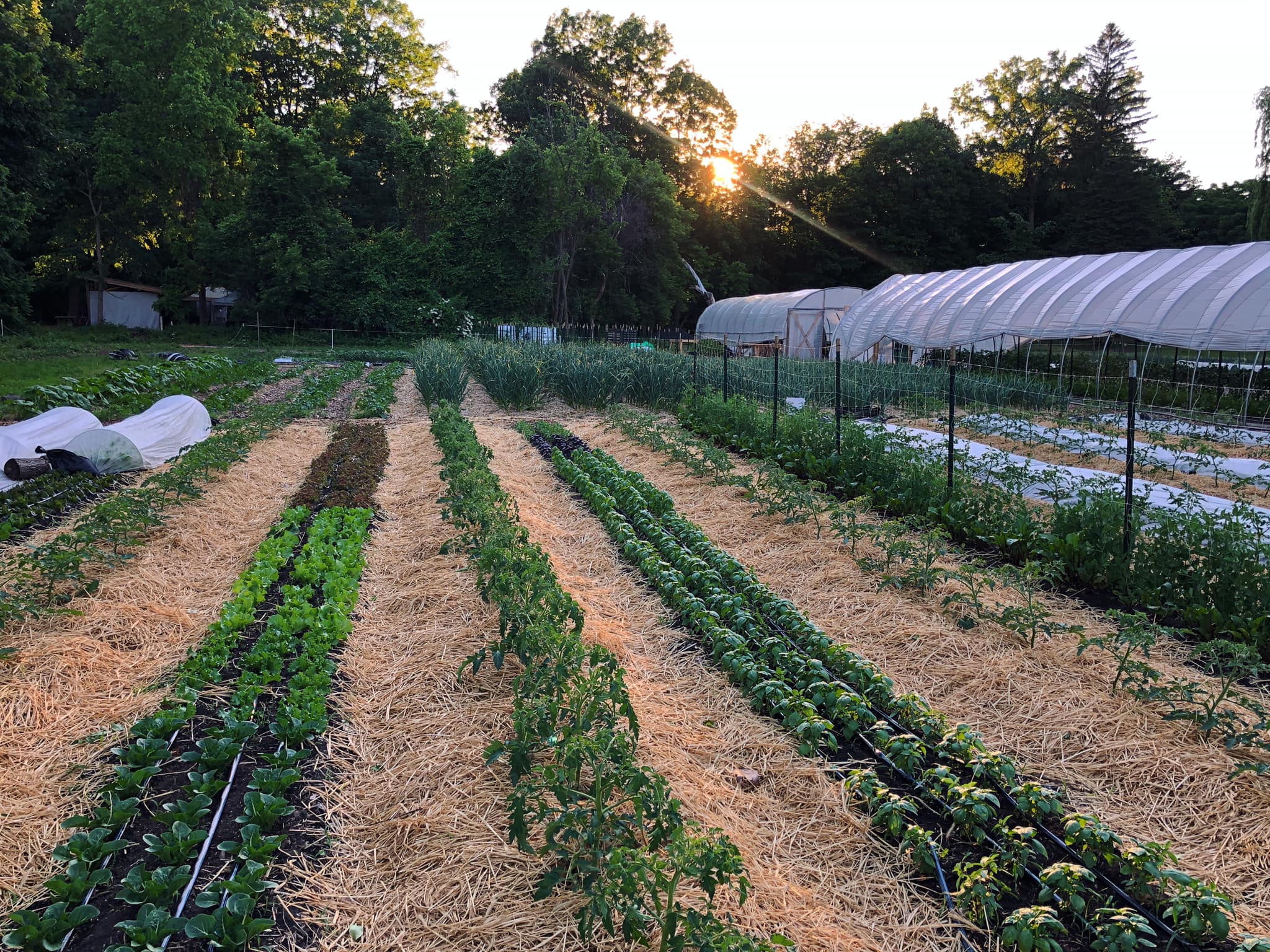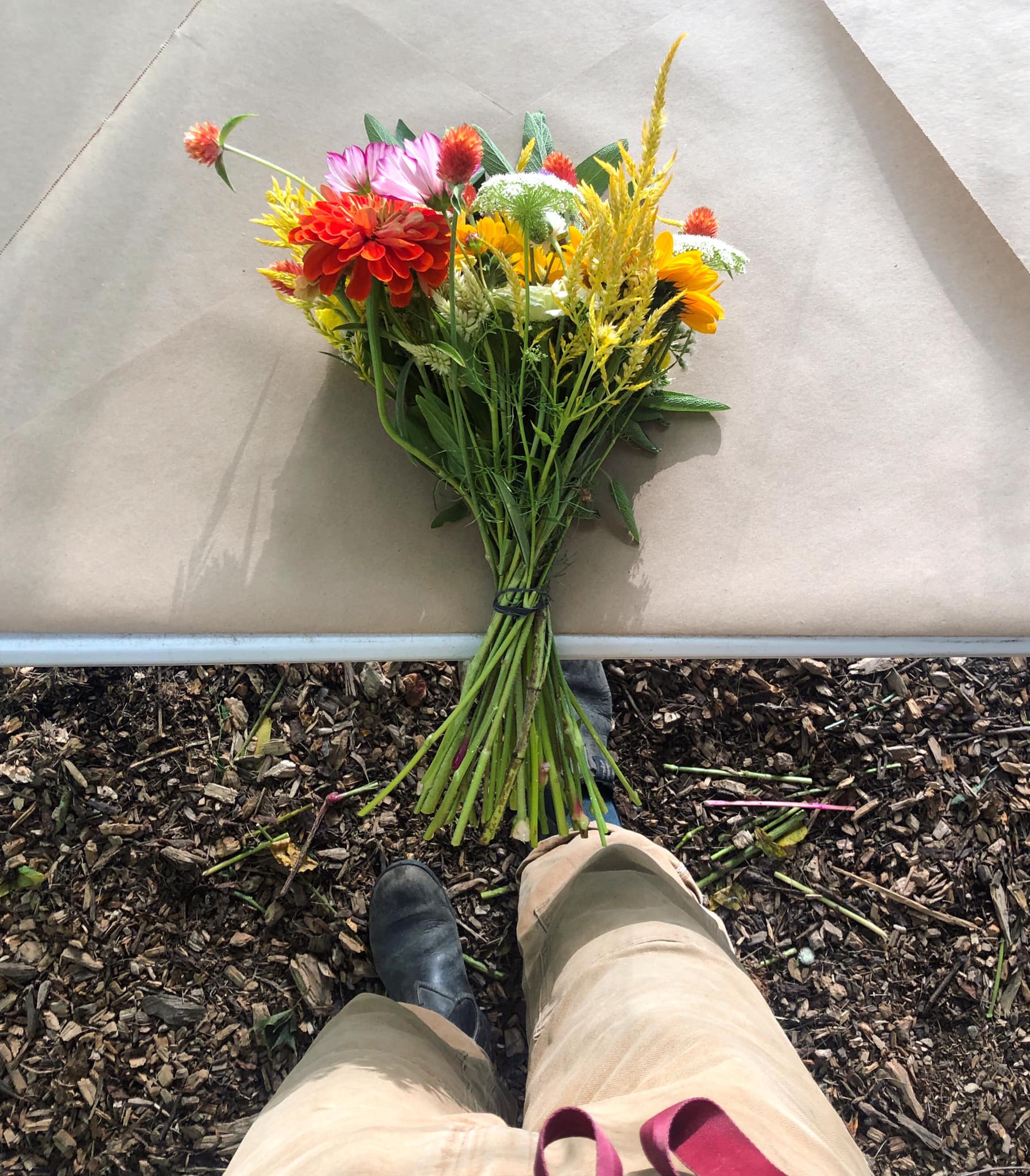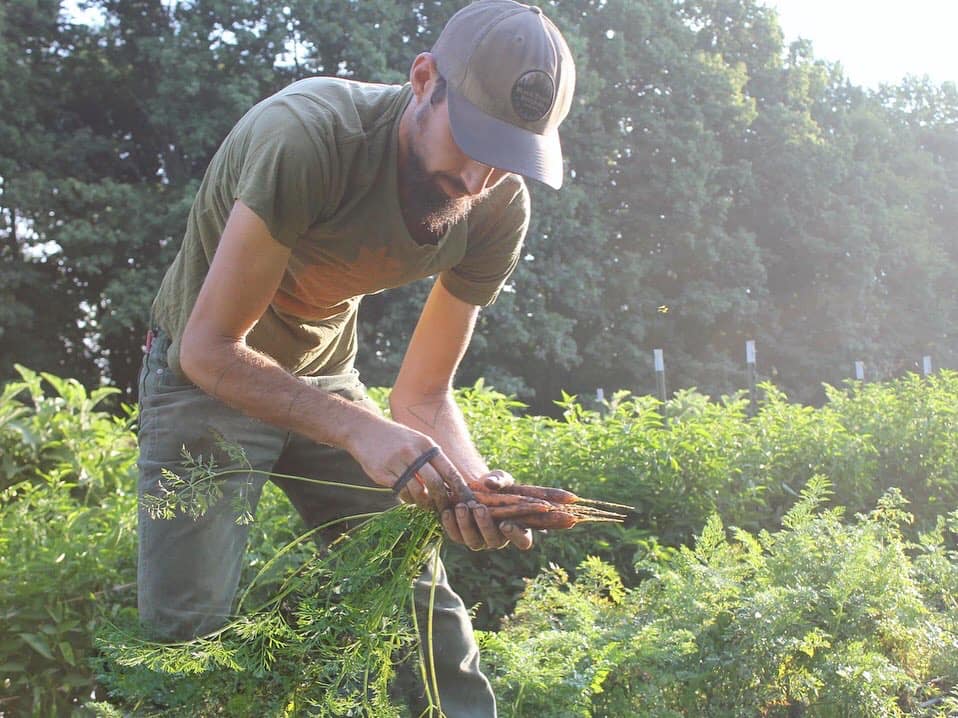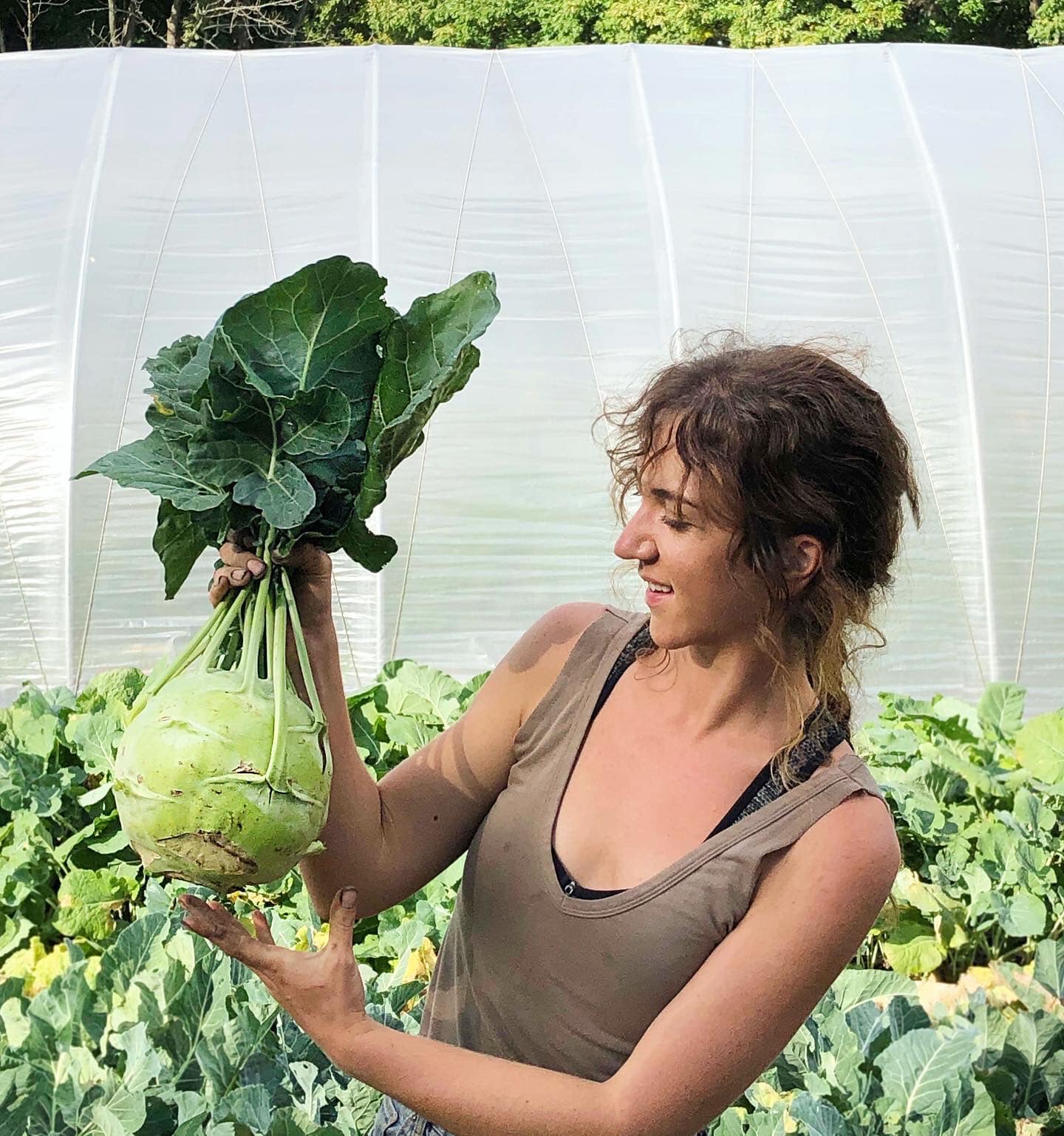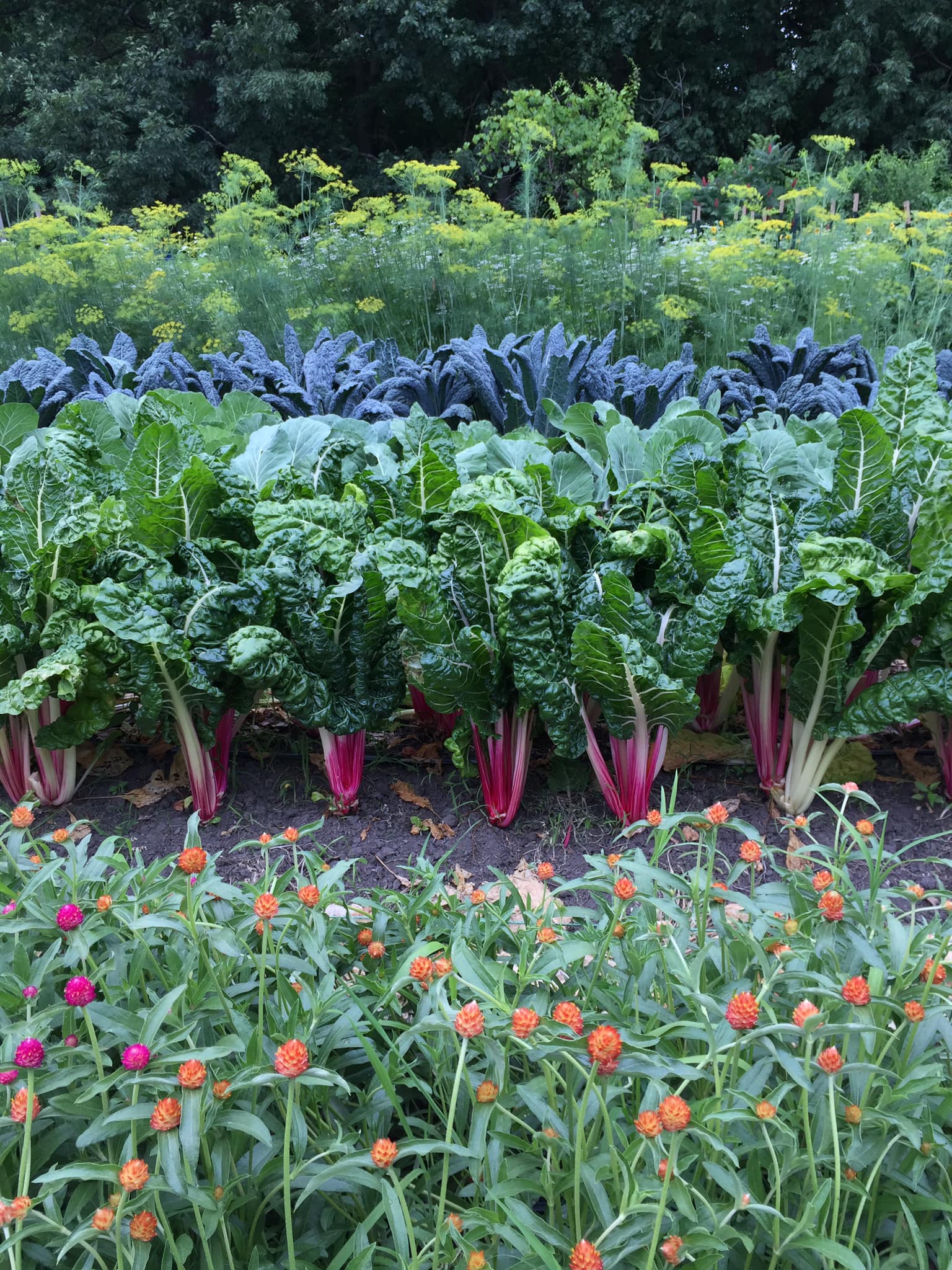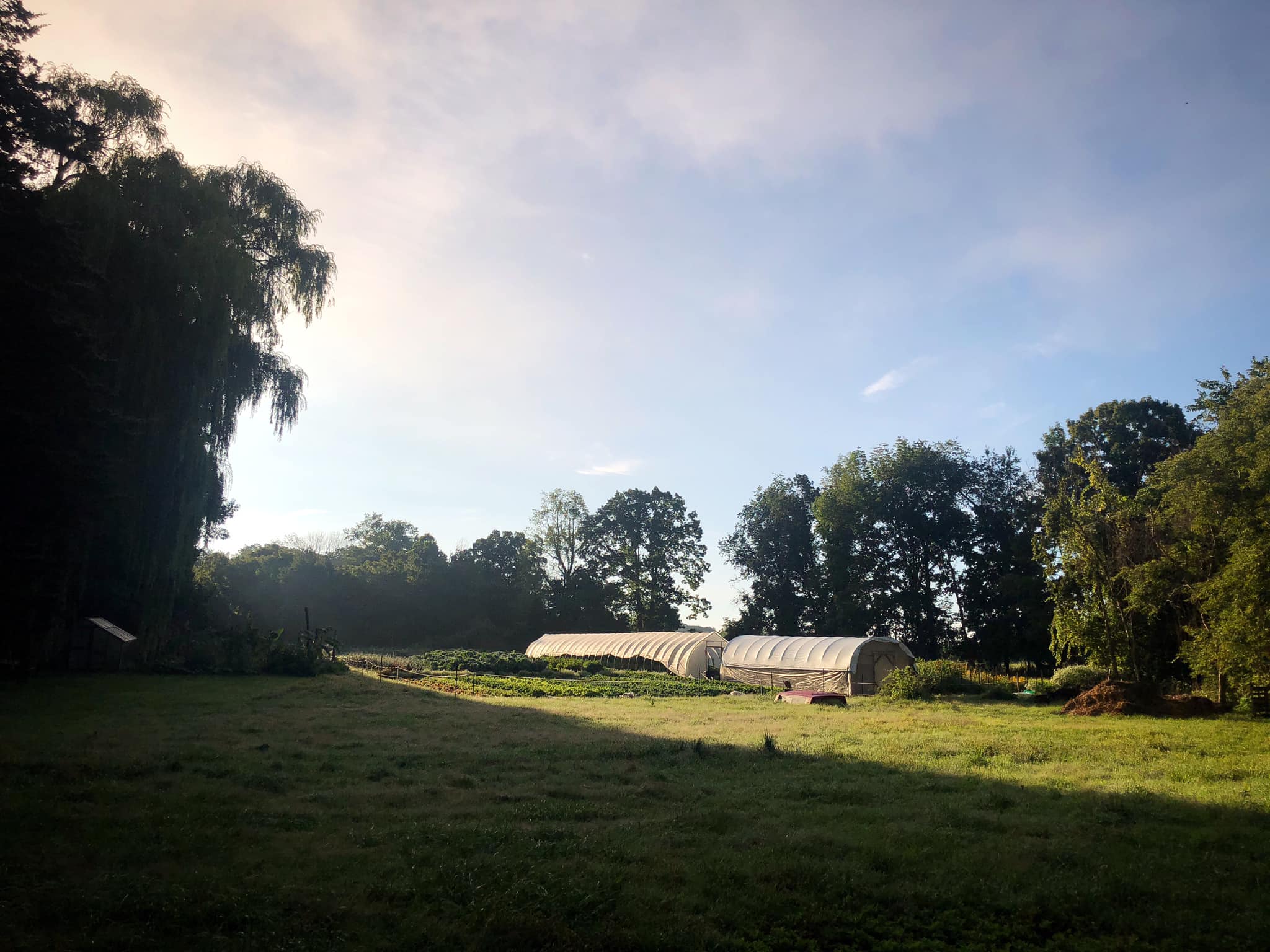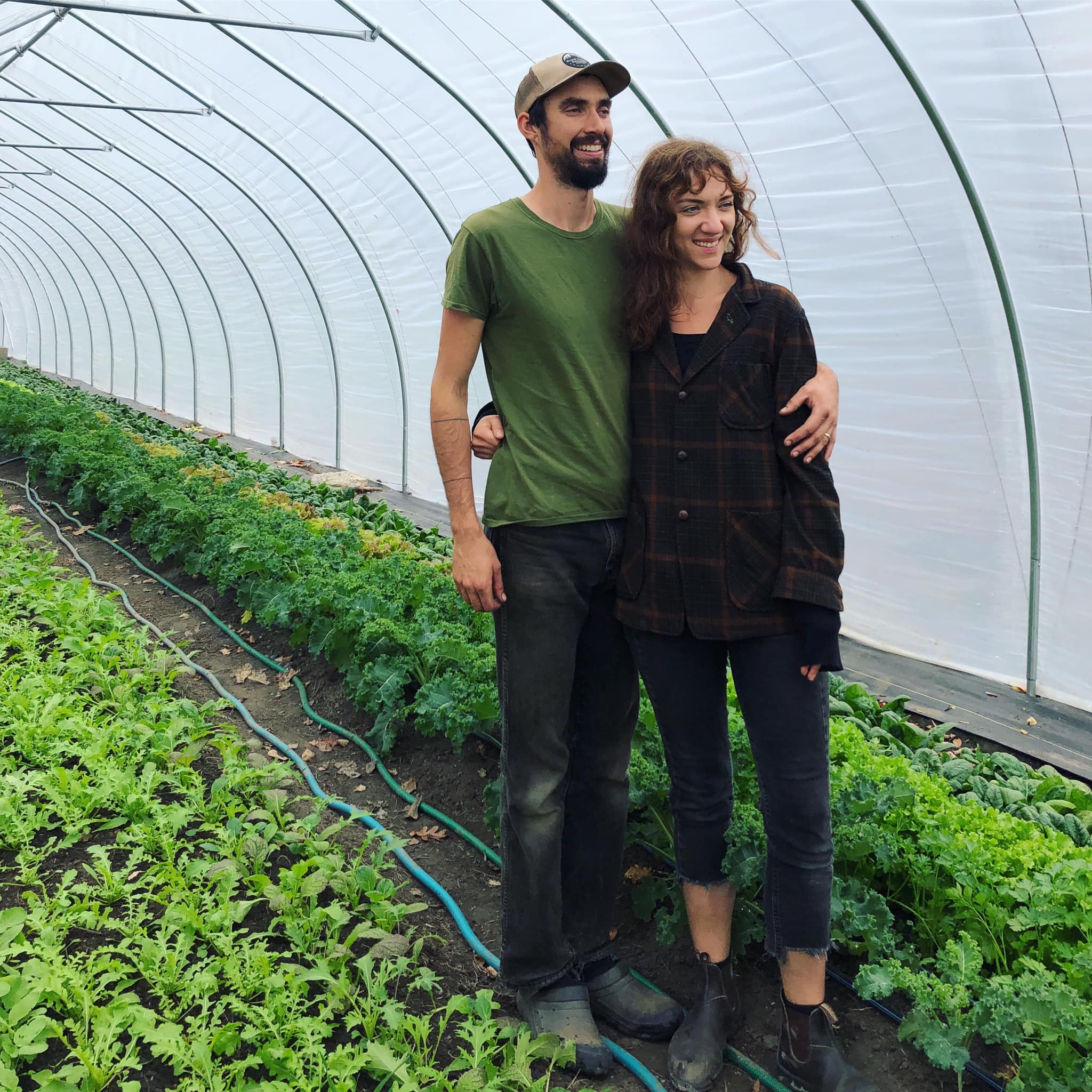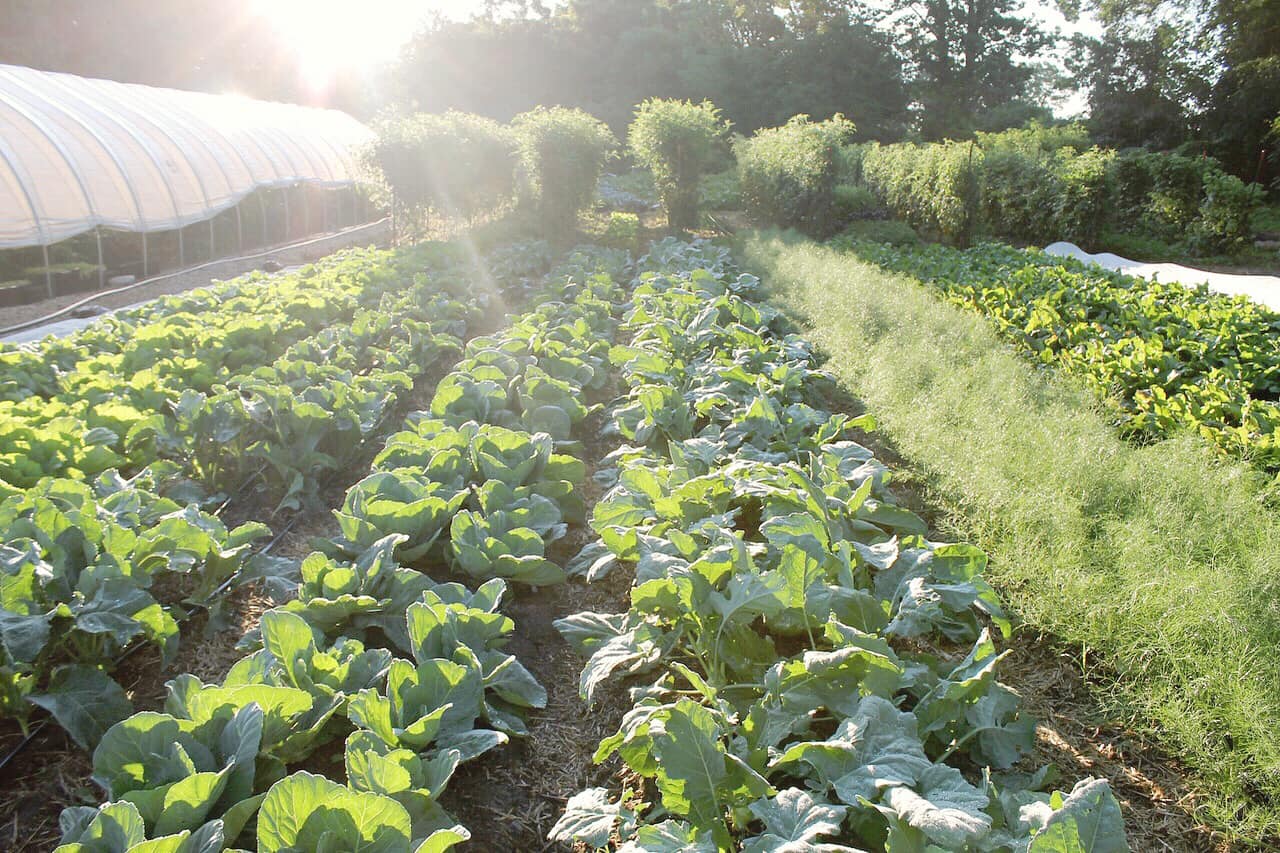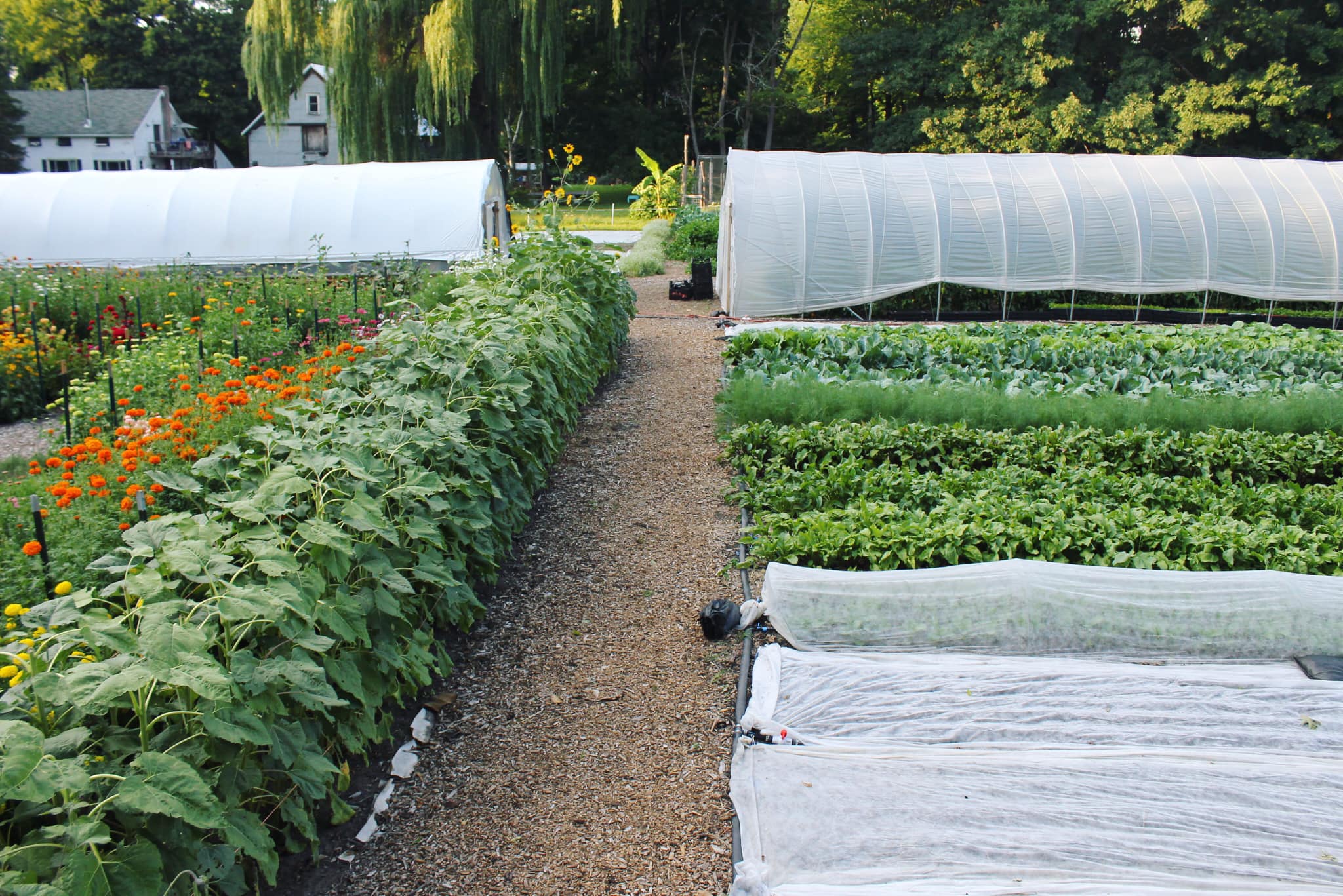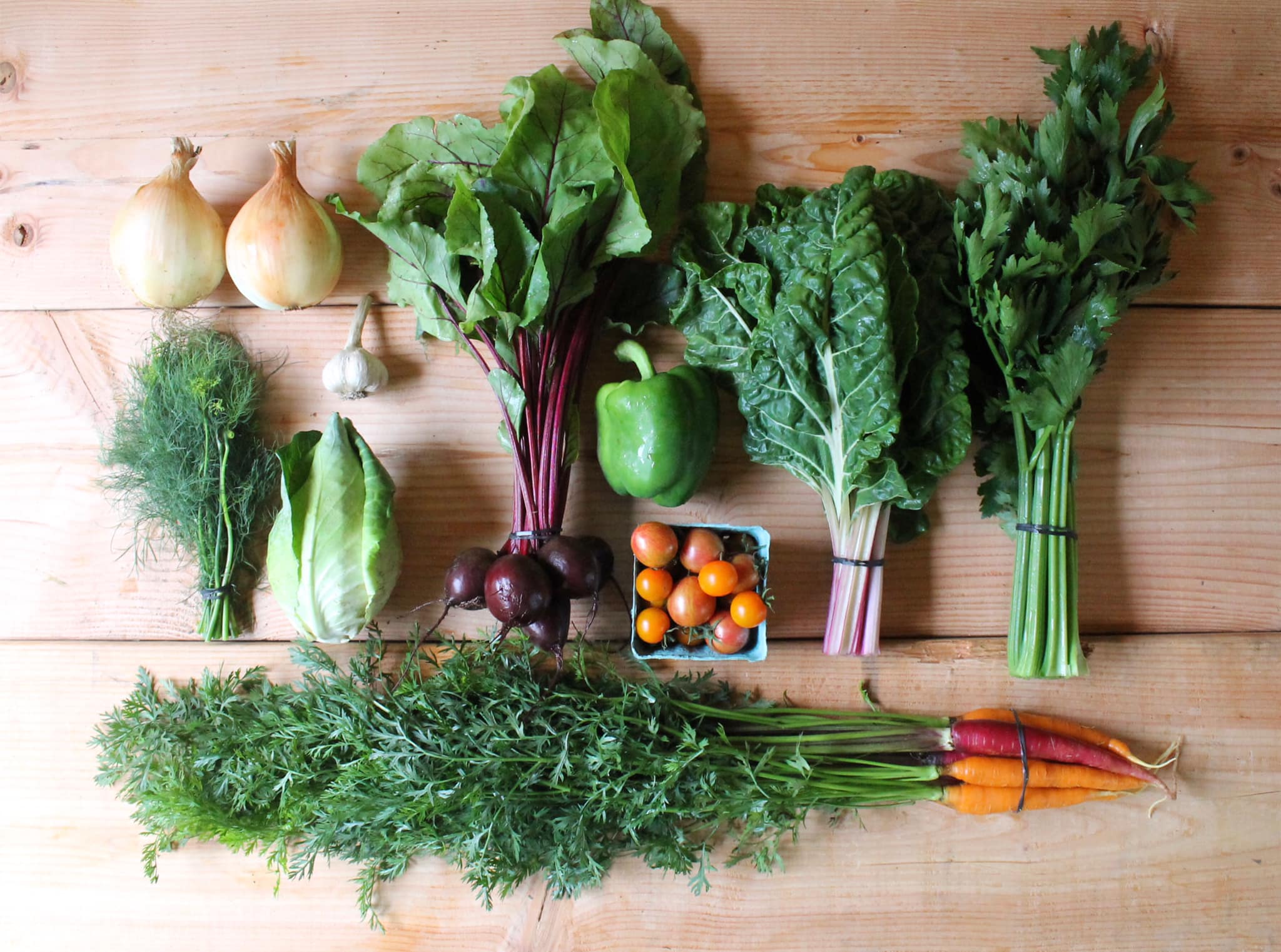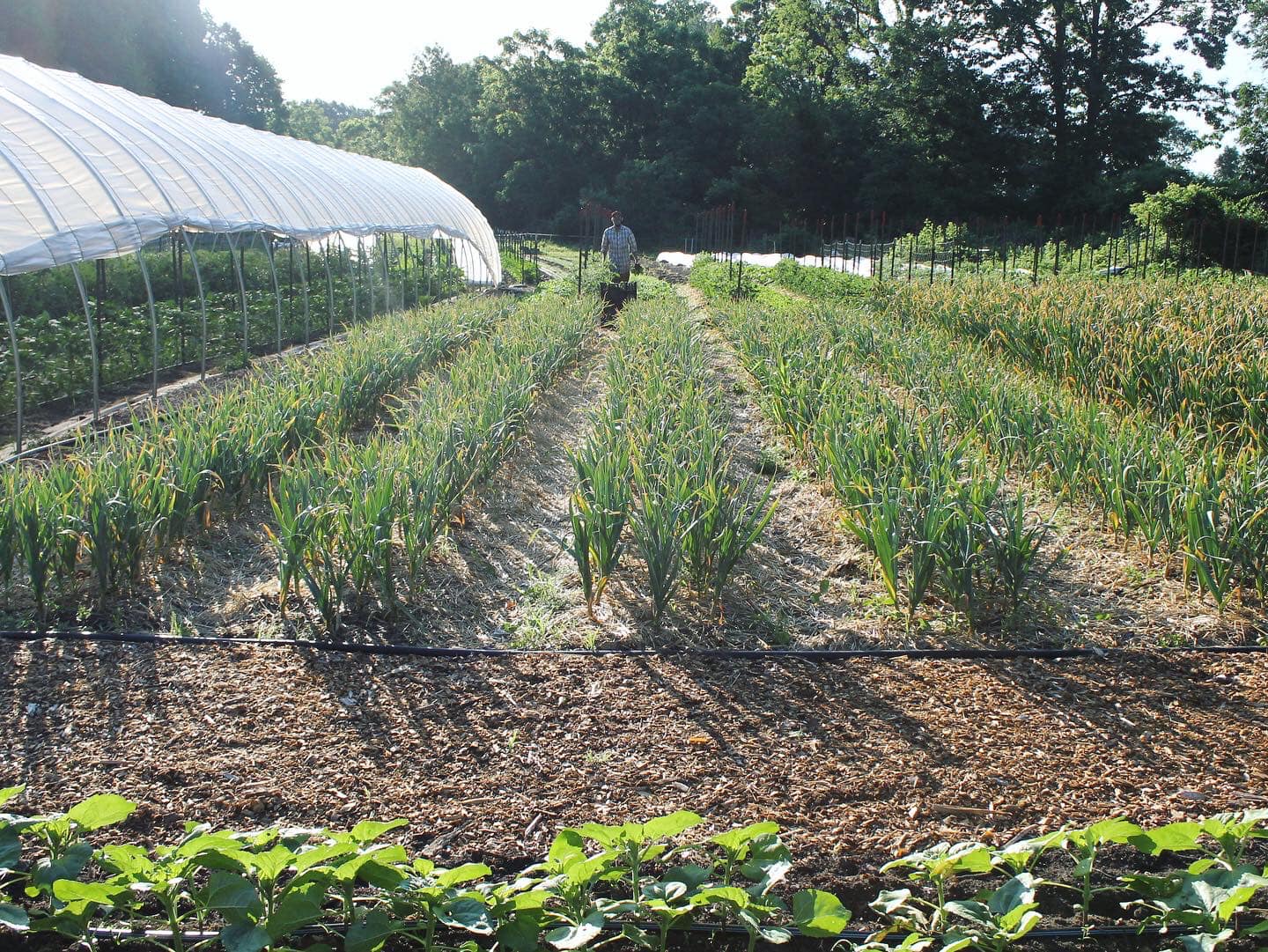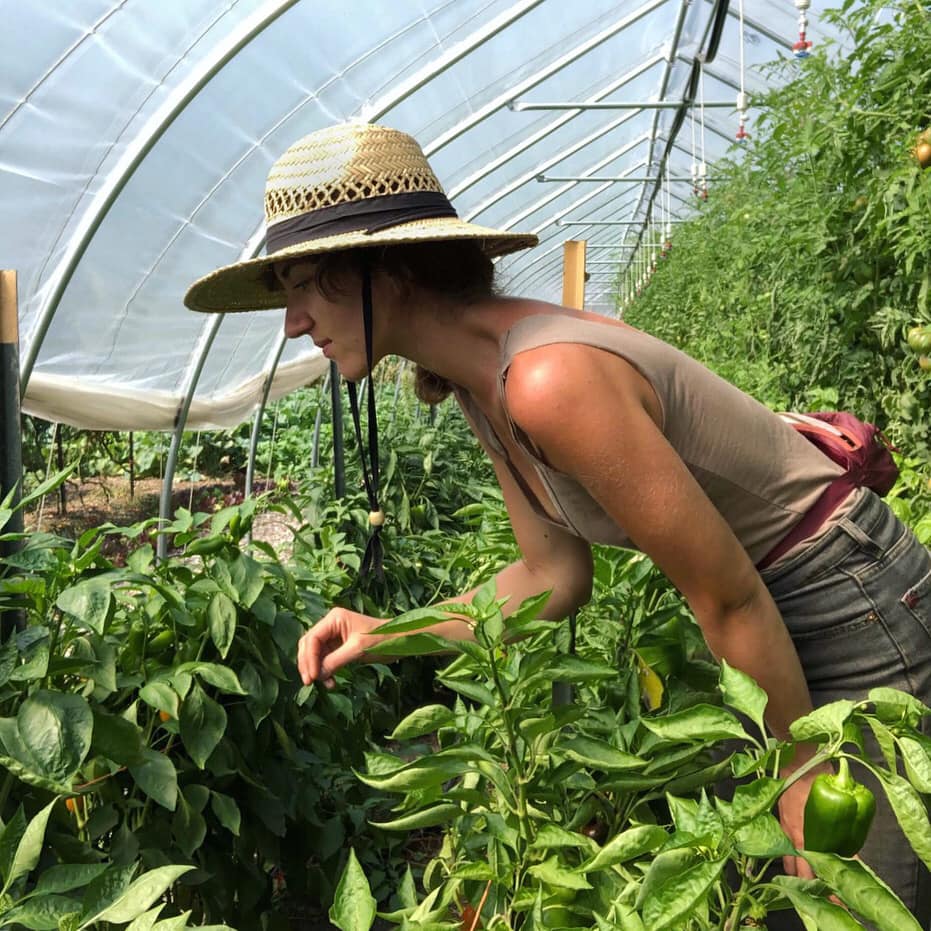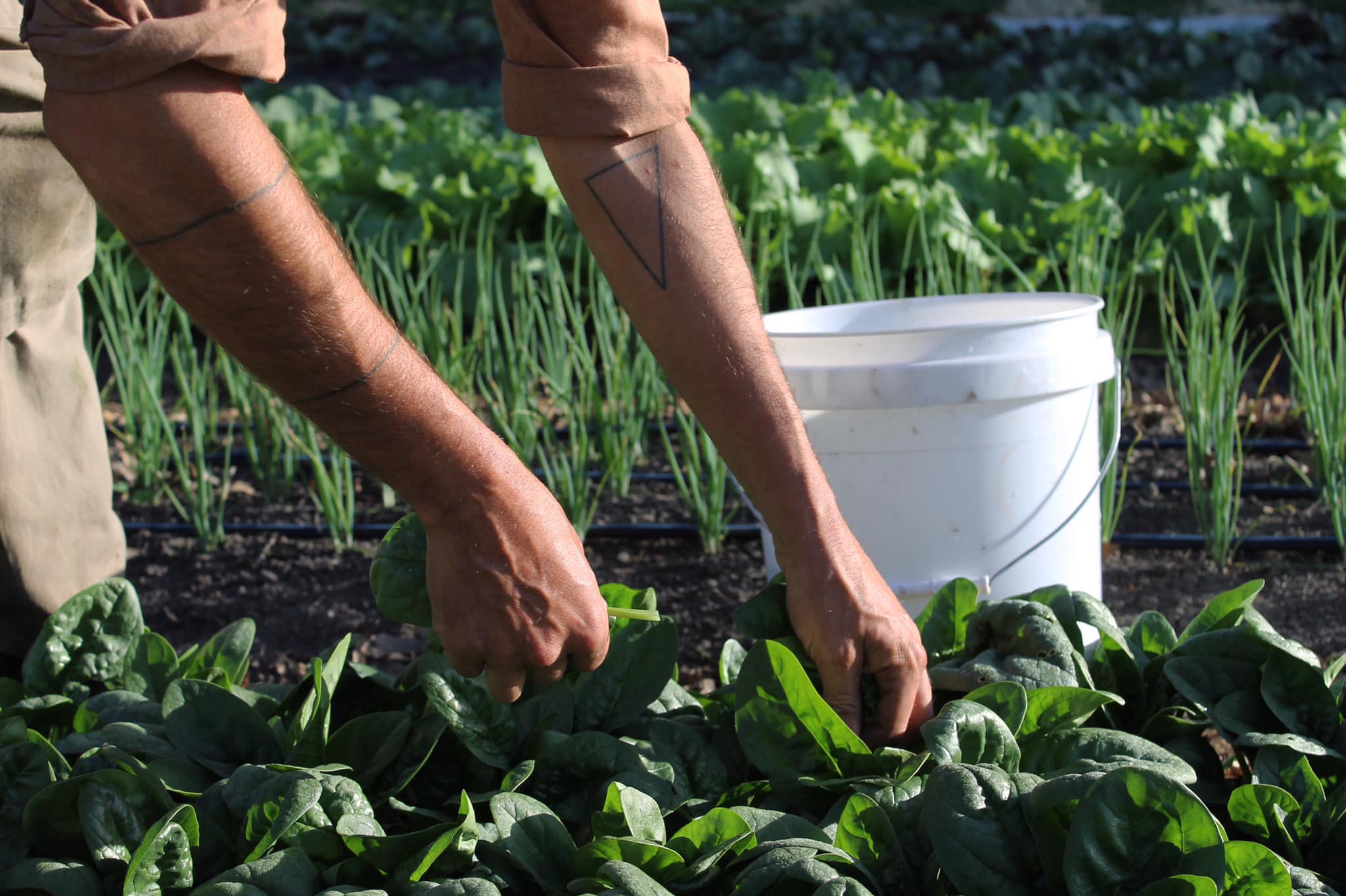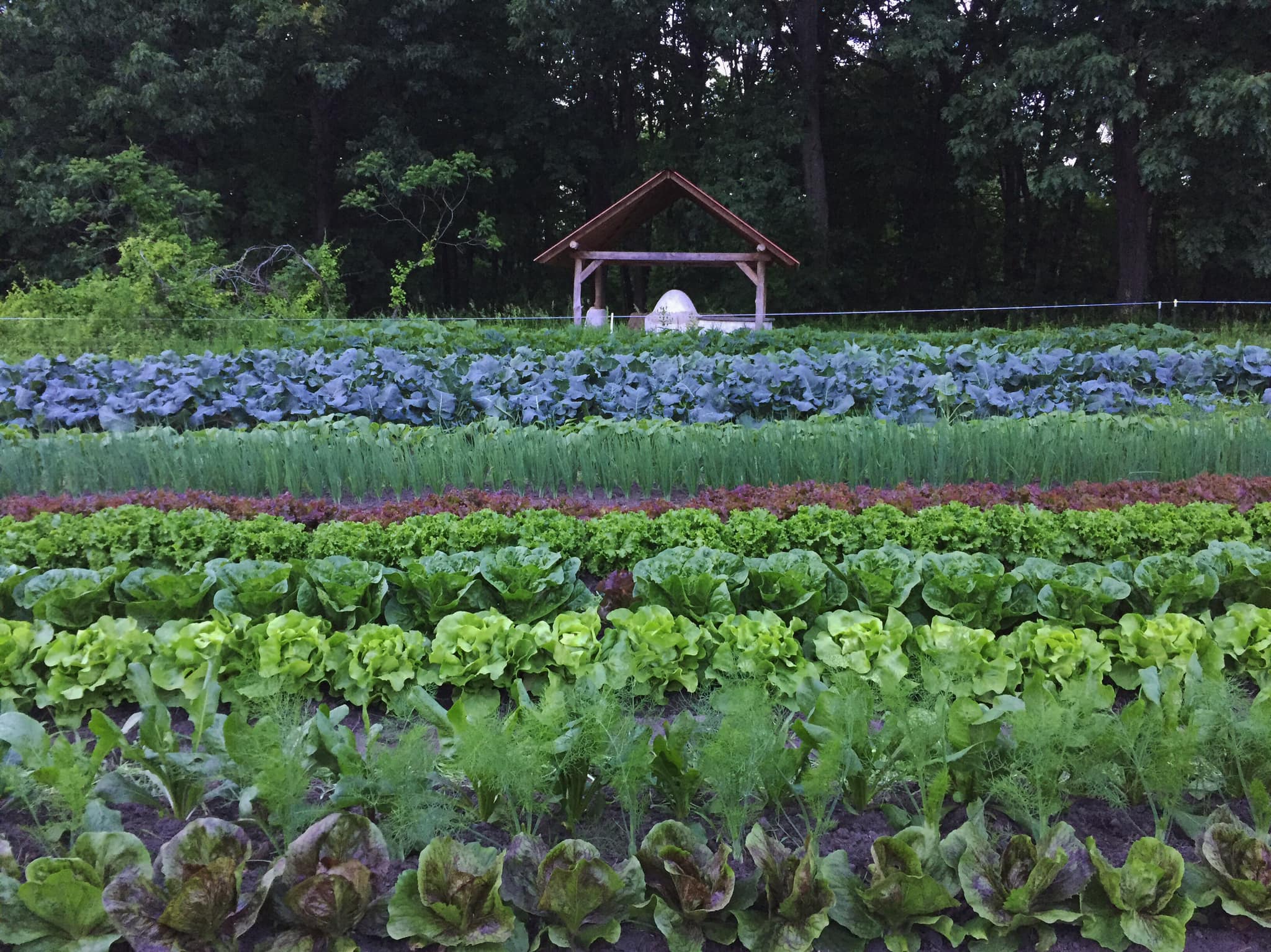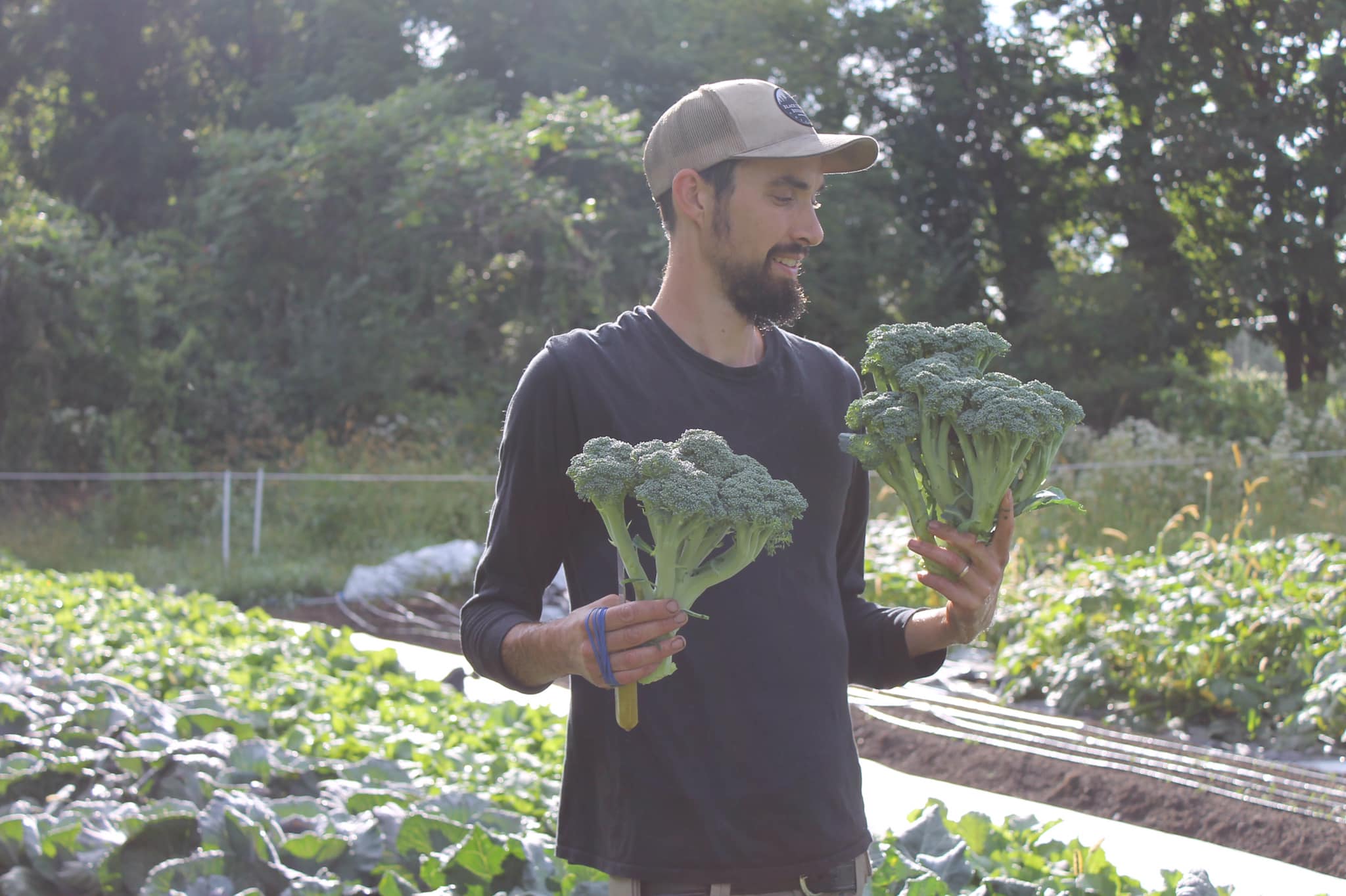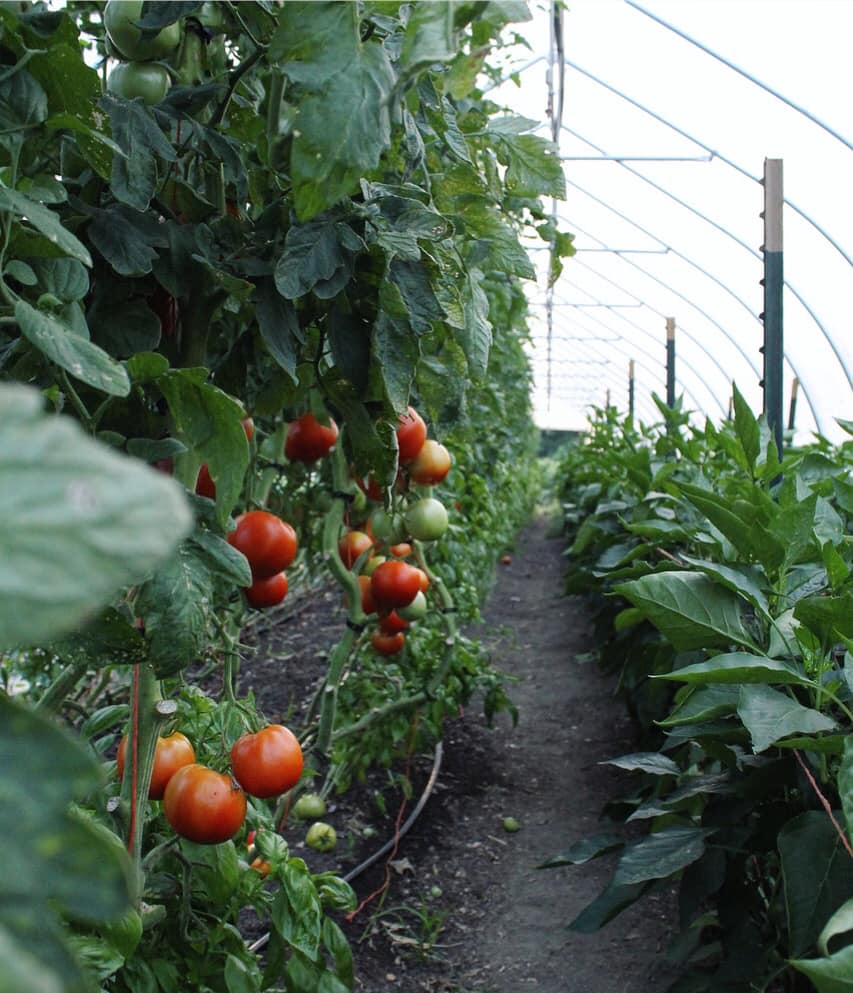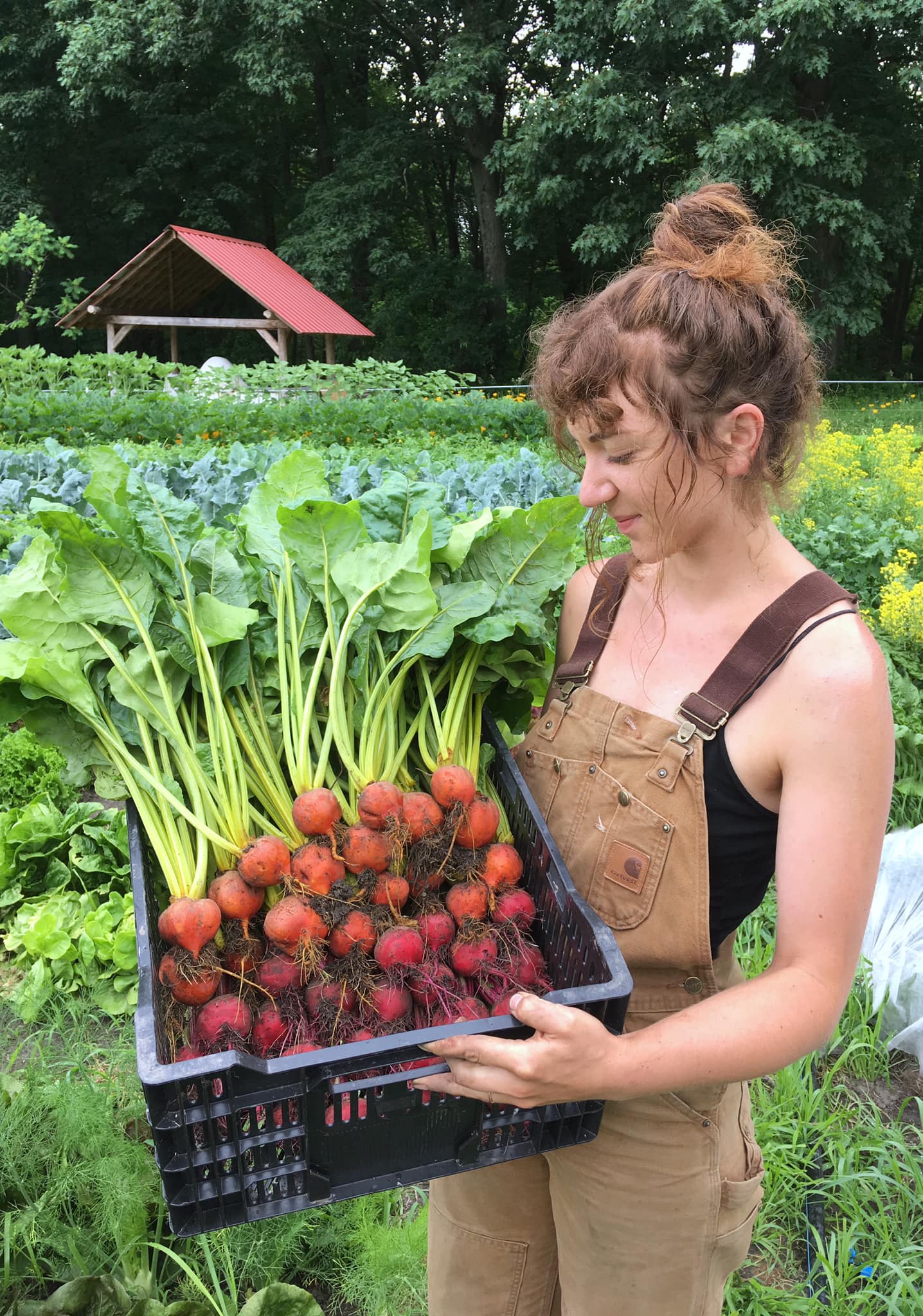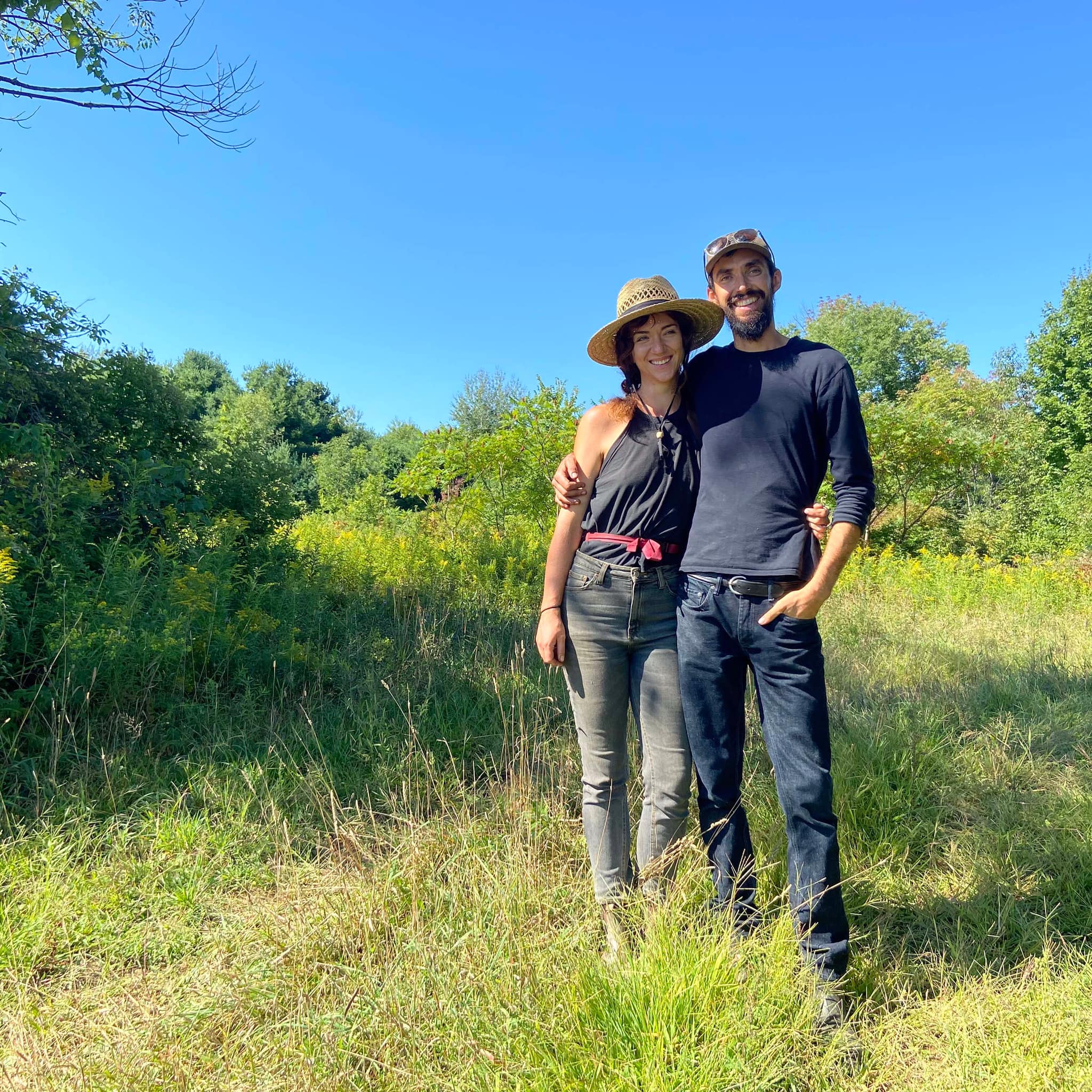
Meet Ben and Alicia from Troy, NY in the United States
“We’re two young farmers, who run Edible Uprising Farm—a small-scale, biointensive, no-till, diversified vegetable and flower farm in the Upper Hudson Valley. We grow food for CSA (Community Supported Agriculture), chefs and a virtual farm stand. Our mission is to grow quality food for everyday people, offer food access within the city, and build soil health through implementing permaculture concepts in an annual system. We also have a dog named Yuki who helps on the farm by warding off rodents and keeping us laughing.
Our passion for farming grew out of a passion for cooking. Vegetables contain infinite flavors and textures, and the more we cooked the more interest we had in delving deeper into the food we ate. Ben had a choice between going to culinary school or studying sustainable agriculture, and his fascination and passion for plants won his heart. Our farm was hence born out of our love of cooking and eating vegetables. Every night when we go out into the field to harvest dinner for ourselves, it’s a reminder of why we love this work so much.
We have yet to find a more meaningful endeavor than growing food. The work is incredibly hard, but at the end of each day you see the fruits of your labor and know that you have done something that has benefitted the land and the community all at once. It feels good to work hard for long term benefit of the environment and others.
Our farm is located in the city of Troy, NY in the United States, just across the Hudson River from Albany, NY. Our farm is within the city limits of Troy, and only two miles from downtown. Many of our customers walk, bike or drive less than a mile to get their food from us. We grow on exactly one acre, and do not use a tractor, so we plant very intensively and are able to produce a lot of food in a small space.
Diversity is the key to healthy soil! We grow over 200 varieties of vegetables and flowers. Everything from strawberries, tomatoes, potatoes, cucumbers, to more unusual crops like artichoke, celeriac, kohlrabi, radicchio, ground husk cherries and so many others.
We build soil and maintain robust and healthy plants through a number of essential practices: we don’t deep till our soil, and only disturb the top two inches in order to allow the trillions of microorganisms and fungi living in our soil to thrive undisturbed. We also plant cover crops such as buckwheat, peas, oats, and rye in order to protect the soil and build organic matter. Each year we apply a lot of compost to our permanent beds and believe strongly that if you have healthy, living soil, your crops will be more disease and pest resistant. We also try to create as much habitat as possible for beneficial insects as we can by planting attractant flowers, and seeding native wildflowers along the edges of the farm. We see the benefits of these practices in action everyday.
This year is our first year starting to save seeds, as we see seed security as a crucial aspect of input autonomy on our farm.
Apart from the obvious hurdle of a rapidly changing climate and ever-increasing extreme weather events, our greatest challenge has been land access. We searched for land to buy for nearly seven years without finding quality and affordable agricultural land. We ended up opting to lease the land we farm on, which has met us with many limitations in terms of how we have designed and set up the farm. As farmers, we are constantly thinking about the long term health and wellbeing of the land we are stewarding, and not owning the land we farm means that we can’t put down permanent structures or other infrastructure. We also can’t invest in perennial crops like we would if we knew we could be here long term. Land access is essential for young farmers, and it can be difficult to find affordable land with quality soil near a sizable population to begin farming.
Feeding our community has been more rewarding for us than we ever imagined. We are not only growing nutrients that will heal and nourish people’s bodies, but we are contributing to an essential part of human culture—cooking, eating and sharing food. There’s no greater feeling than knowing the food you are growing is contributing so much to so many people’s everyday lives. Being outside everyday and snacking on veggies in the field is pretty great, too.
Our farm has a program called “Community Funded Farmshares” where our community donates money into a fund that provides produce from our farm for families who don’t have access to good food. It allows our customers to support both us as farmers and their neighbors who face huge barriers in accessing healthy and fresh food. This year we have ten families that are fed weekly from late spring until Thanksgiving from our farm through this program.
In March of last year, this farm was just a field, and in the last year and a half we have grown thousands of pounds of food and fed hundreds and hundreds of households. It shows that it doesn’t take long to build a strong local food system and we hope farms like ours become the norm in agriculture, not the anomaly.”
